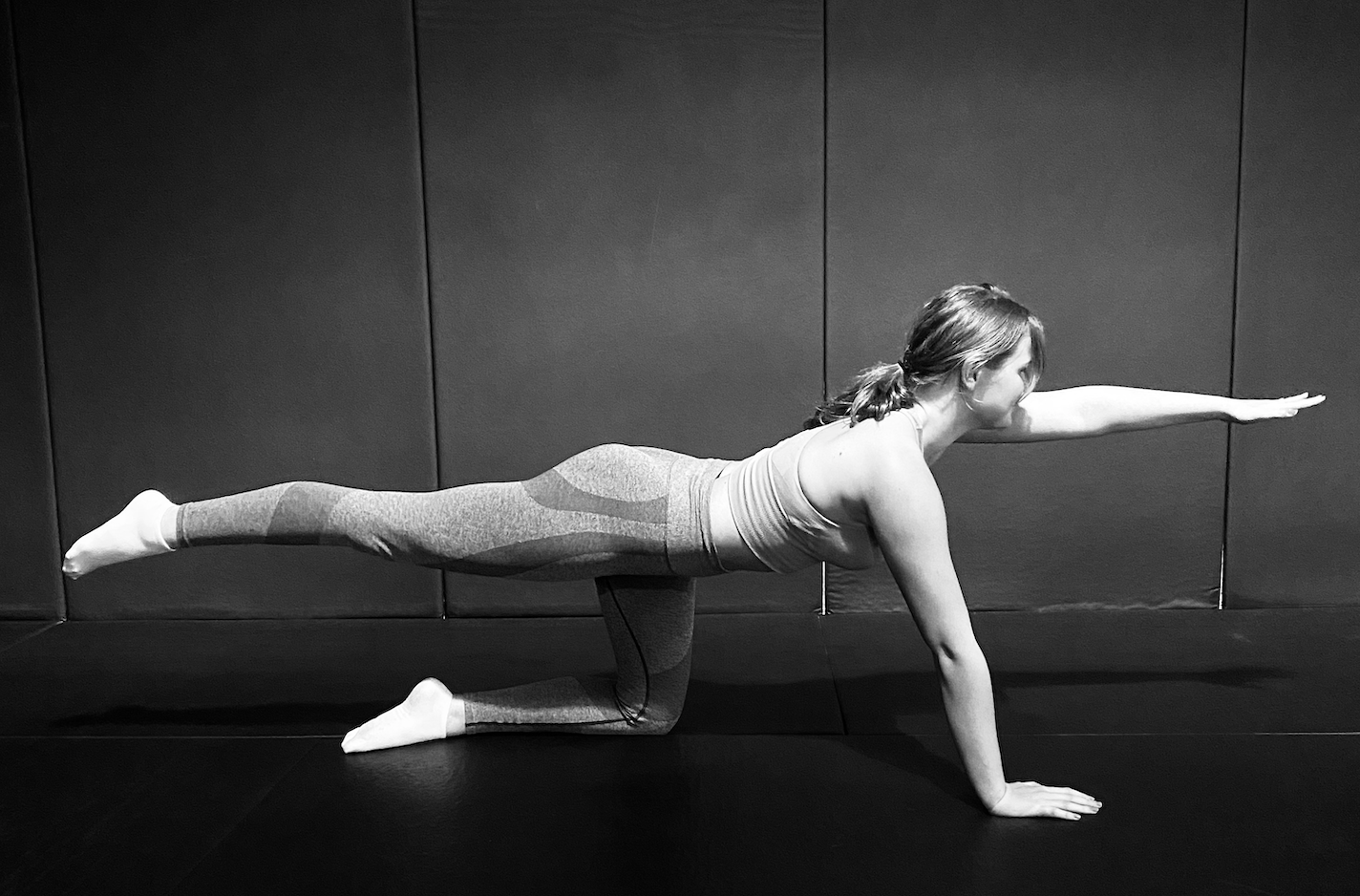
Learn The Hip Hinge!
One of the most common reasons for developing lower back pain is the inability to properly move from the hips. From bending over to lift something off the ground to squatting. The majority of people who develop lower back pain have allowed their lower back to compensate for lack of mobility in the hips. This has progressively allowed the lumbar spine to move excessively and become unstable. Learning to move from the hips and keep the spine stable with core stiffness is fundamental in optimal movement patterns and rebuilding the correct movement pattern.
To perform a correct hip hinge, start in a standing position with your hands straight in front of you (zombie stance). Grip the ground with your feet (driving the big toe into the ground) and feel for your bodyweight spread evenly across your entire foot (tripod foot). Drive your knees out to the side to engage your lateral glutes (make sure to keep your foot firmly glued to the ground and your big toe in contact with the floor). Using a small resistance band loop across your knees can be great in the early learning process to teach your body how to create sufficient tension in these lateral hip muscles.

Back to Basics
Before we look at each of the recommended core stability exercises, it’s important to understand the difference between flexibility and mobility!
Flexibility is the ability of a muscle or muscle groups to lengthen passively through a range of motion
Mobility is the ability of a joint to move actively through a range of motion
It should be a priority to address any significant mobility restrictions at the hip and thoracic spine. If mobility in either of these areas is restricted it can lead to movement compensations at the low back. If hip mobility is limited during the squat the pelvis can be pulled under creating posterior pelvic tilt as the lumber spine will have to compensate for the lack of mobility at the hips. This will place flexion under load on the Lumber spine which will place excessive stress on the discs.
If you only performed isometric core stability work but neglect significant mobility restrictions in the joints above or below the lumbar spine, the core stiffness you created will be compromised.

Are ‘Ass to Grass’ squats bad for your knees?
Is ‘Ass to Grass’ squats bad for your knees?
The squat is a corner stone exercise in almost every strength and conditioning program.
However a myth still lingers (deep within the physio world) that deep squats are dangerous to the knees and should never be performed.
There is a range of opinions when it comes to optimum depth of the squat. Some die hard lifts believe in the fable ‘Ass to Grass’ squat that, ‘this is the way.’ While others believe quarter squats are sufficient for functional training such as Dr Joel Seedman.
So what is the optimum depth for a squat?

What is the maximum muscular potential of drug-free athletes?
The bodybuilders and fitness models that appear on the cover of Mens health and bodybuilding magazines serves as poor role models for what’s possible without “assistance”. It’s vital to establish reasonable goals and limits for natural and athletes is important in order to put things into context.

10 Laws of Training: We Can All Learn From Louie Simmons At Westside Barbell
Louie Simmons has set the bar for strength—and strength and conditioning coaches from his invitation-only gym…..Westside Barbell in Columbus, Ohio. Simmons's style of training ties together ideas from scholars, athletes, and coaches from the former Soviet Union and Bulgaria, as well as years of training himself and others.
No matter what age you are or what your goals are we can all learn from Simmons, it doesn’t stop you applying the Westside philosophy and training principles to achieving your objectives.

CrossFit: The Fast Food of Training
CrossFit is a system of exercise that has rapidly grown in popularity over the last decade, through films such as 300 and the Military using a workout name dedicated to a fallen US Personnel. Marketing itself as the ‘ideal’ training system for everyone from housewives to special forces operators, CrossFit aims to physically prepare people for whatever life may throw at them. It is not about following a particular routine, but about constantly varying workouts.

Understanding the risks involved in training in hot climates (25 °C+) and high humidity
Training in hot weather (over 25 °C) puts extra stress on your body. If you don't take care when exercising in the heat, you risk serious illness. When you training in the heat your body sends more blood to circulate through your skin. This leaves less blood for your muscles (reduction in oxygen), which in turn increases your heart rate. If the humidity also is high, your body faces added stress because sweat doesn't readily evaporate from your skin. That pushes your body temperature even higher. Both the exercise itself and the air temperature and humidity can increase your core body temperature.


